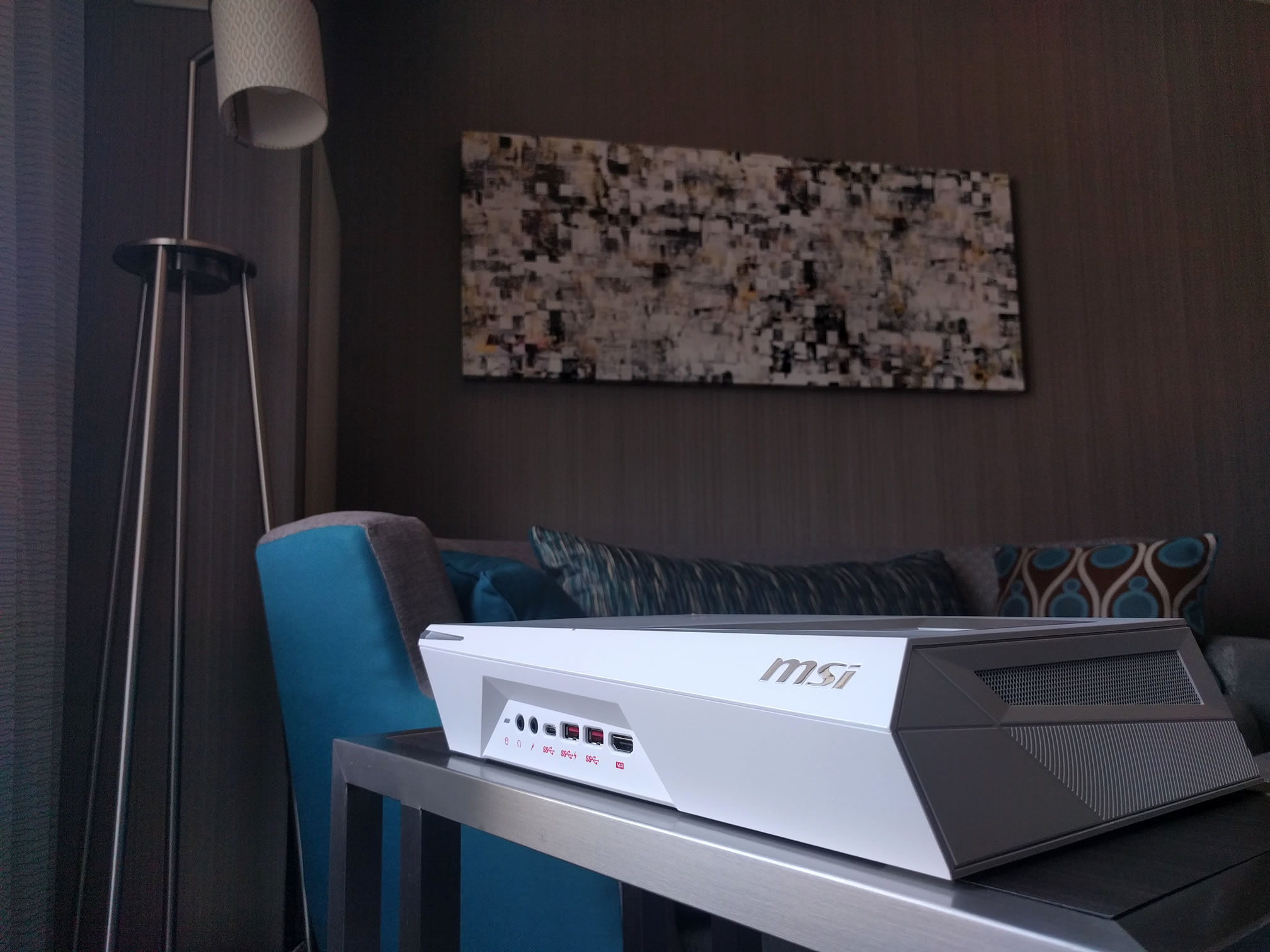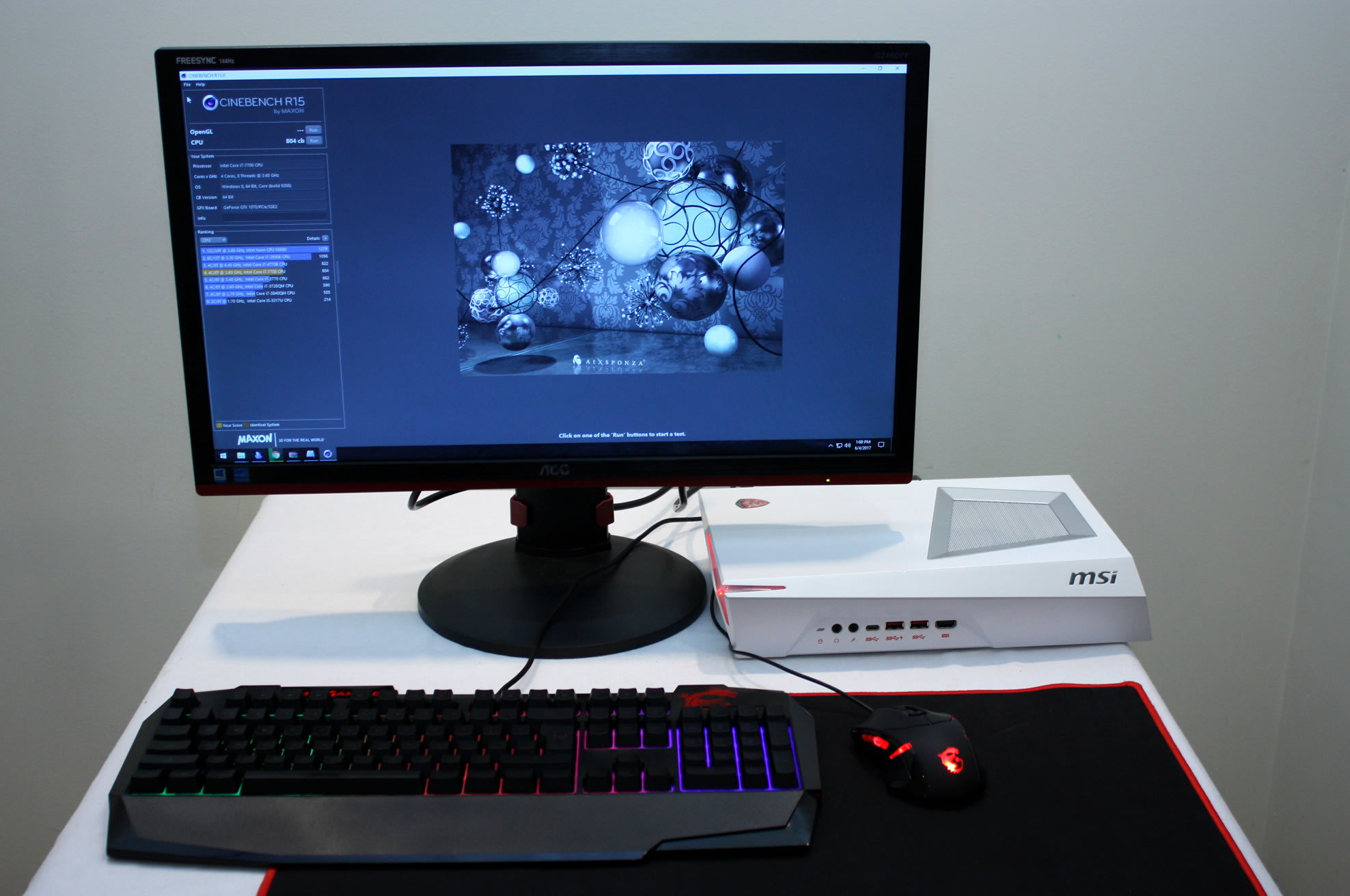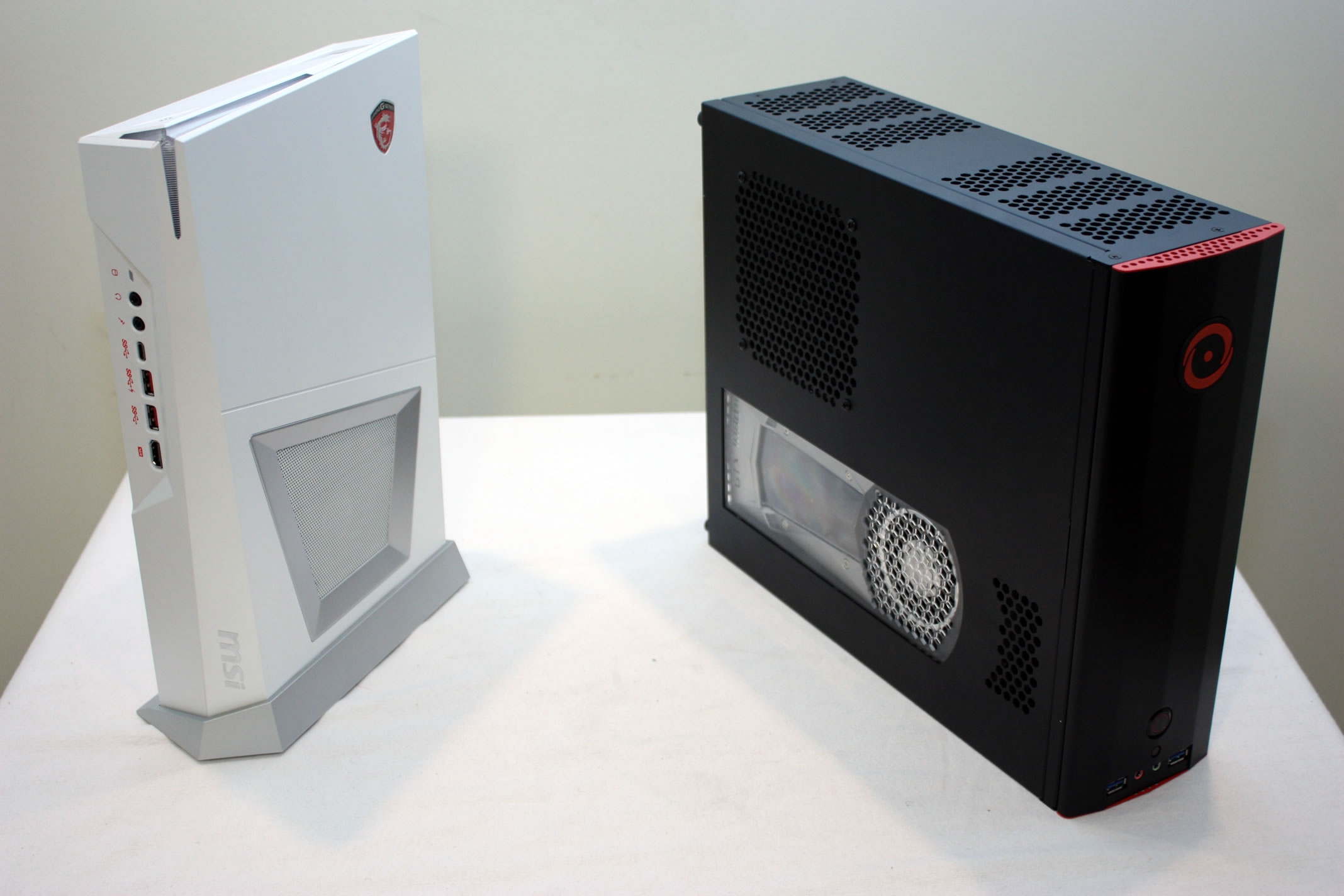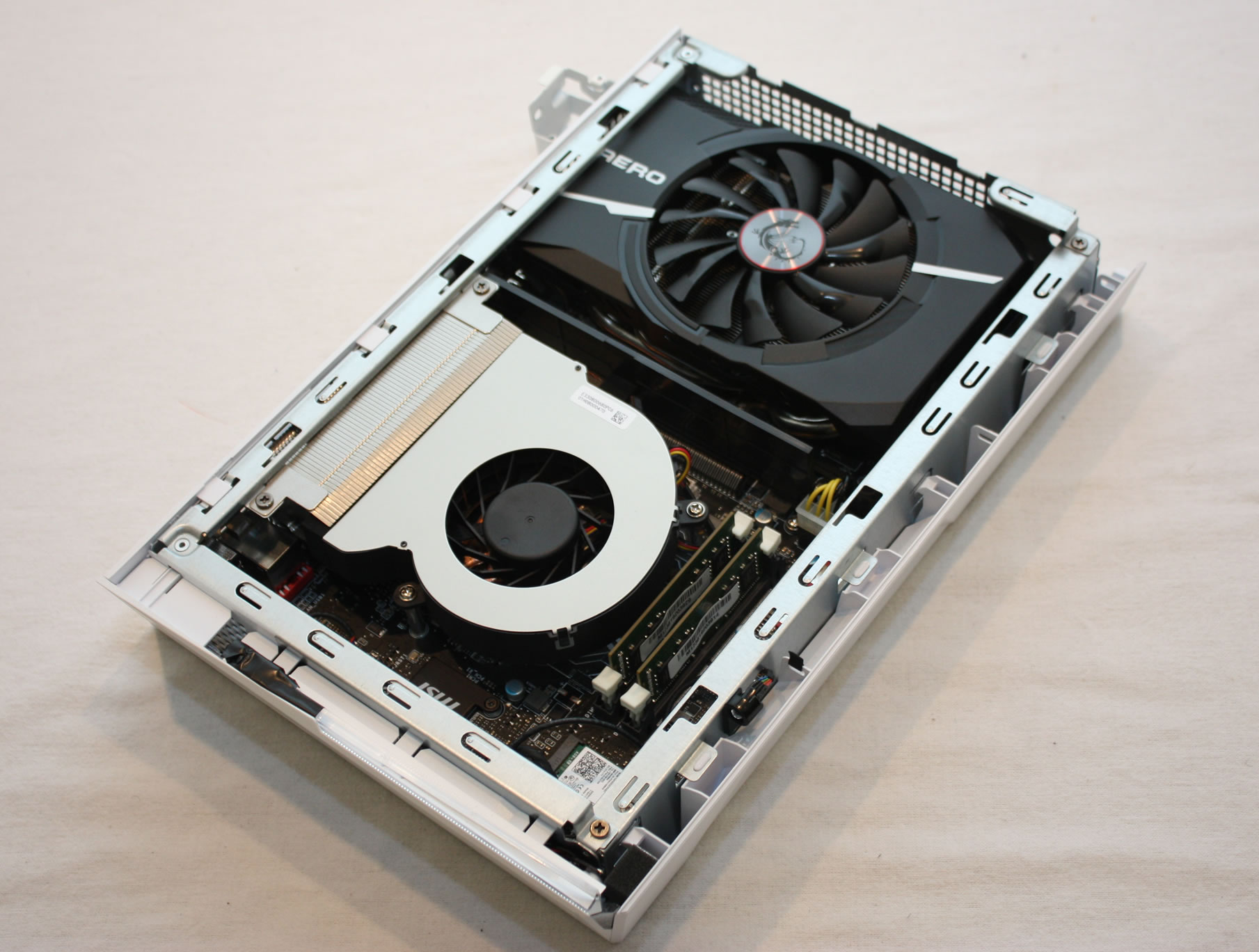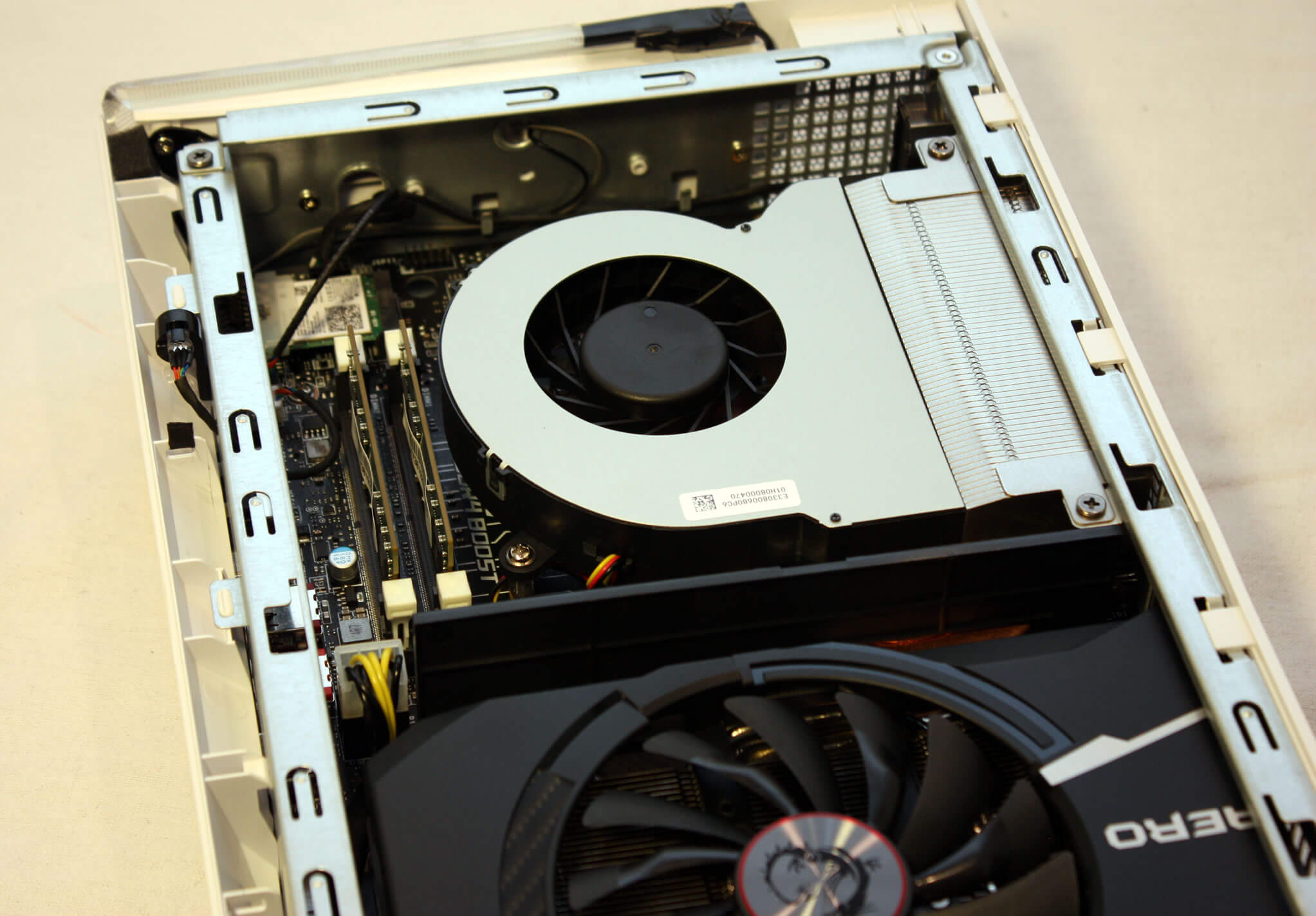How can you make a small form factor (SFF) PC unique enough to grab consumers' attention? There are three key aspects that define a SFF PC: internal hardware, size, and thermal/acoustic performance.
It's been an ongoing challenge for manufacturers to balance those three and stay competitive. It is easy to pick two of them and do that very well, but that still leaves the finished product lacking in the other category. For example, you can put top of the line hardware in a computer and give it great cooling, but it's hard to scale that down to a size that makes sense for a SFF PC.
You can get great cooling and acoustic performance in a tiny case, but that limits how much hardware you can put, and nobody desires an underpowered rig. Finally, you can squeeze high-end hardware in a small case but that leaves no room for adequate cooling and you'll probably just end up thermal throttling anyway.
The Trident 3 Arctic is MSI's attempt at striking that perfect balance. It's not the fastest or the smallest, but that's ok. It does everything it needs to do, and does it well. Could this be your next gaming or home theater PC? Let's take a look and find out.
MSI has had the Trident 3 out for a while, but the Arctic version is a limited-edition upgrade with some higher end components inside. Out of the box you'll find the PC itself, a rather large power brick, a short HDMI cable for VR pass-through, a keyboard, and a mouse.
At just 4.72 liters, the Trident 3 is only a hair larger than a PS4 (4.45 liters) or about the size of two laptops stacked on top of each other. That's not a lot of room to work with when it comes to gaming components so everything has a purpose and place. Around the back we find the standard GTX 1070 DisplayPort, HDMI, and DVI outputs, the "VR Link" pass-through, proprietary power connector, onboard HDMI, 4 USB 2.0 ports, an Ethernet jack, a USB 3.0 port, Kensington lock, line-in, line-out, and a microphone jack.
Unlike most other SFF PCs, there aren't any configuration options for the Trident 3. Standard specs include a 7th-gen Core i7-7700 (3.6 GHz) running on the H110 chipset, a modified GTX 1070 8GB GPU, 16GB of 2400MHz DDR4 RAM with up to 32GB supported, a 256GB M.2 SSD, and a 1TB HDD. The unit retails for $1,500.
The hardware list is impressive given the system's footprint, but it doesn't leave much room for growth. The CPU is not a "K" SKU, meaning you can't overclock it. The ITX motherboard is a non-standard layout, so you won't be able to upgrade to future chipsets. The GTX 1070 is a real desktop card though, which is nice. Unfortunately, it is positioned lengthwise along the short side of the case so you'll have to find another ultra compact card if you choose to upgrade in the future.
Some SFF PCs have the PSU integrated in the chassis, while others rely on an external unit. Since much of the Trident 3's internal hardware is non-standard, I think the option to include a power brick was the best choice. It's a big and bulky adapter, and it gets hot, but keeping it outside of the case gives more room for internal components.
The Trident 3 Arctic is a high-powered gaming PC, but that also means it needs a significant amount of power to feed all the components inside. At idle the Trident 3 pulls a mere 54 Watts, but under load I saw the system pulling as much as 450 Watts. The power supply is rated at only 330 Watts so this is a 120 Watt overhead. MSI's engineers told me this was well within the operating specs of the unit, but that still puts the power supply at less than 75% efficient. It's not a huge issue, but it does run hot to the touch. I think a power supply with a slightly higher power rating wouldn't have hurt here.
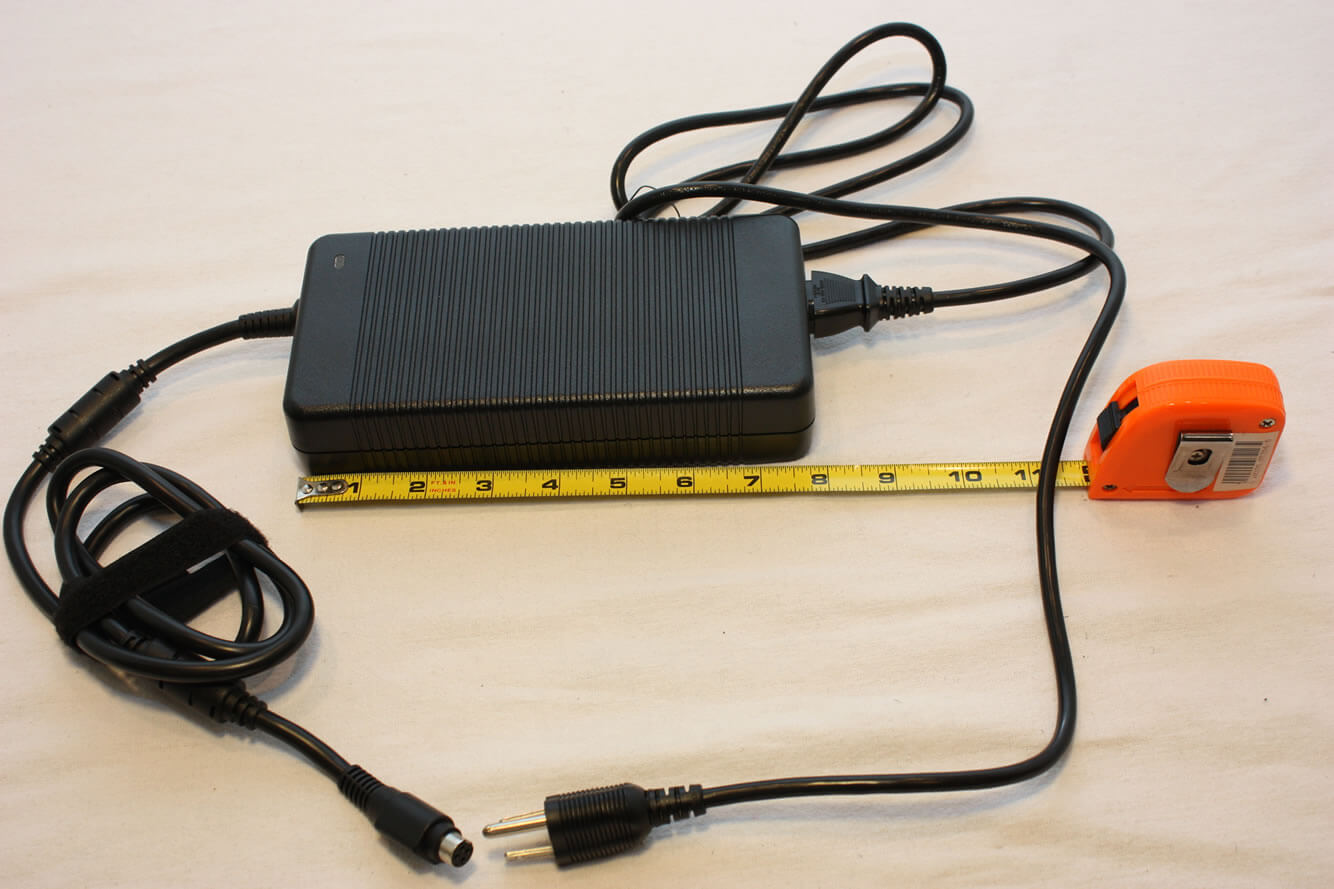
The Trident 3 Arctic's industrial design is most similar to the Playstation 4 with a flat top and bottom and angled edges. An included plastic base can be used if you want to operate the unit vertically.
In the upper left corner is the power button and a software controllable RGB LED accent. Moving across the front we find the I/O ports. There is a headphone jack, microphone jack, a USB Type-C port, two USB 3.0 ports, and an HDMI pass-through for VR.
The USB Type-C port is nice to see on the front but I'm not really sure what the point is for the HDMI connection. On a standard desktop it makes sense to have one so you don't have to crawl under your desk to reach the back I/O. On the Trident 3 Arctic though, this isn't an issue since the entire machine is only a few inches deep.
On the top we find a matte white finish on one side and a silver GPU ventilation accent on the other side. There are more intakes and exhaust ports around the sides as well. Because of this, you can position it pretty much any way you like without having to worry about covering anything up.
Overall I like the design and aesthetic of the Trident 3 Arctic. It's not at all boring, and it's not gaudy like some other gaming PCs.
The Trident 3 Arctic also comes with the MSI DS4200 keyboard and DS B1 mouse. They aren't nearly as bad as most standard pre-included peripherals. The membrane keyboard is backlit but that lighting is not adjustable other than brightness adjustment. The mouse is on the smaller side and generally gets the job done.
Test Impressions and Benchmarks
Getting into the case took a few minutes to figure out. The side panel pops off (requires a considerable amount of force) and a few screws must be taken out, but then you're on. The hardware is partitioned into two sections: the motherboard assembly on one side and the GPU on the other.
Despite the small size, MSI has managed to fit a desktop GTX 1070 in here. Unfortunately, it is positioned lengthwise along the short side of the case so you'll have to find another ultra compact card if you choose to upgrade in the future.
Moving to the motherboard area, things are a little more set in stone. Under the laptop-style blower fan is a stock Core i7-7700. The proprietary motherboard uses 16GB of standard DDR4 SO-DIMM memory. This is upgradeable to 32GB if you choose. Other than the CPU blower fan and GPU fan, there is no other cooling in the computer.
Using the external vents, MSI has the airflow directed in such a way that more cooling isn't necessary. Rather than trying to cram every last thing inside, they have made sure to keep acoustics as a key feature.
The Trident 3 Arctic runs very quiet even during light gaming. The CPU and GPU fan curves are offset to favor silence over temperature in the normal operating zones. It's basically silent when idle, but thermals do run a bit high. The CPU ran warm at 55 degrees with the GPU running at 44 degrees under no load.
At full load, the GPU averaged out at 72 degrees. This would normally leave lots of room for overclocking, but I wasn't able to get much out of the Trident 3 Arctic. I'm not sure if it was the motherboard, graphics card, or limited power available, but the system would crash after a few minutes at even modest overclocks. I just kept the GPU at stock clocks with a slight boost to the power limit and that worked great.
Once you start turning things up for the CPU though, things get troublesome. I think MSI should have definitely included a beefier cooler because under load, the one in there just can't keep up. Even though the chip isn't overclocked, it easily hit its TJ Max of 100C. This was under a 100% synthetic load, but it only took a few minutes to reach this boiling hot temperature. The fan also abruptly ramps up from silent to jet engine levels and then back down again every few seconds.
A more gradual fan curve and a larger heatsink would certainly be worthwhile place for improvement. I was unable to tweak this at all since the BIOS is very locked down. The maximum fan speed was set to only 60% as well. Another small intake fan could also help with cooling here. As long as your games or workload are not heavily CPU intensive, you will run very hot but should be mostly fine under normal conditions though.
Overall system performance is really good though. The Intel 256GB M.2 SSD makes boot and game load times very short. Check out our complete reviews of the i7-7700 and the GTX 1070 if you would like an in depth look at the hardware inside. Otherwise, here are the benchmarks for the entire Trident 3 Arctic system.
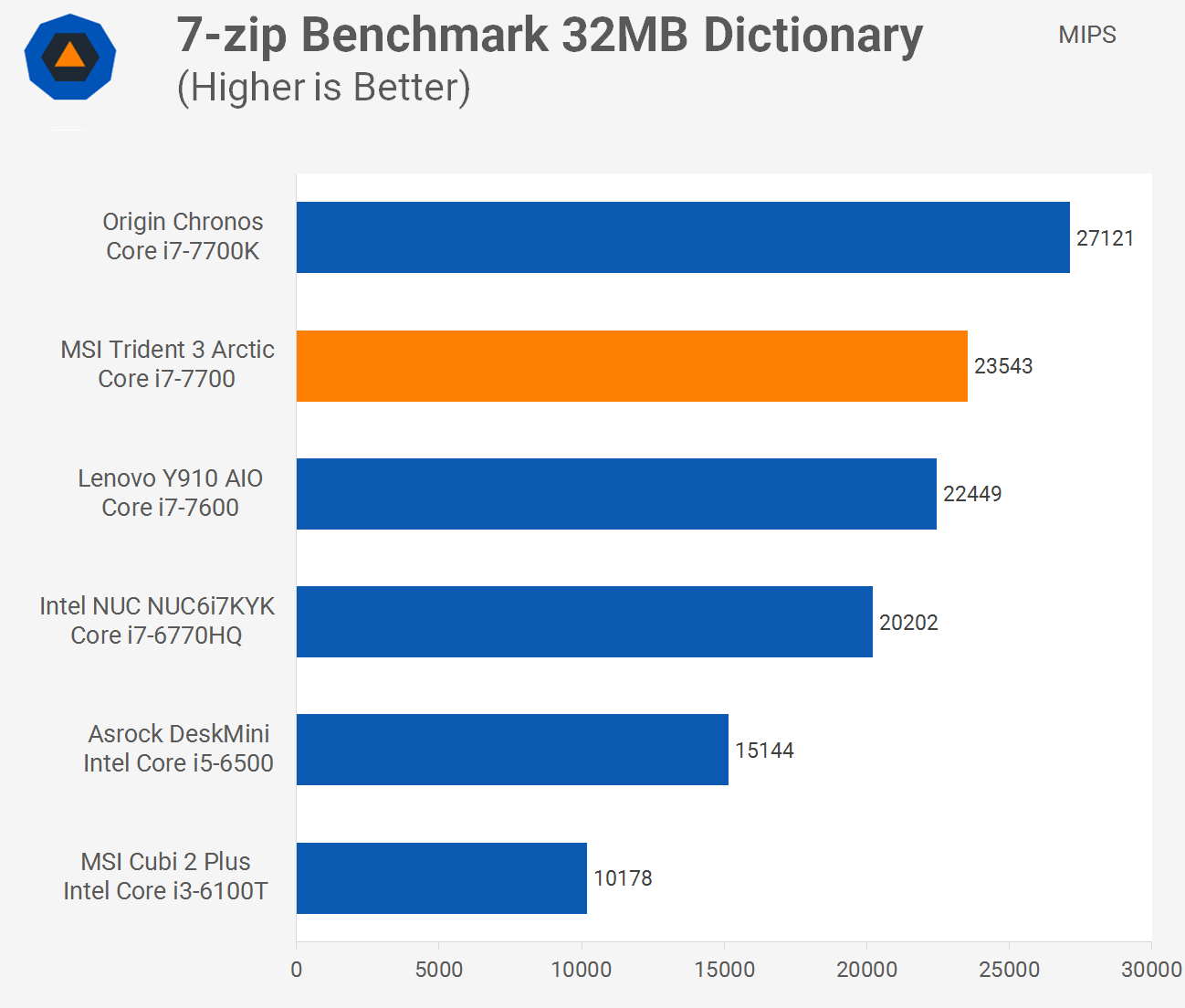
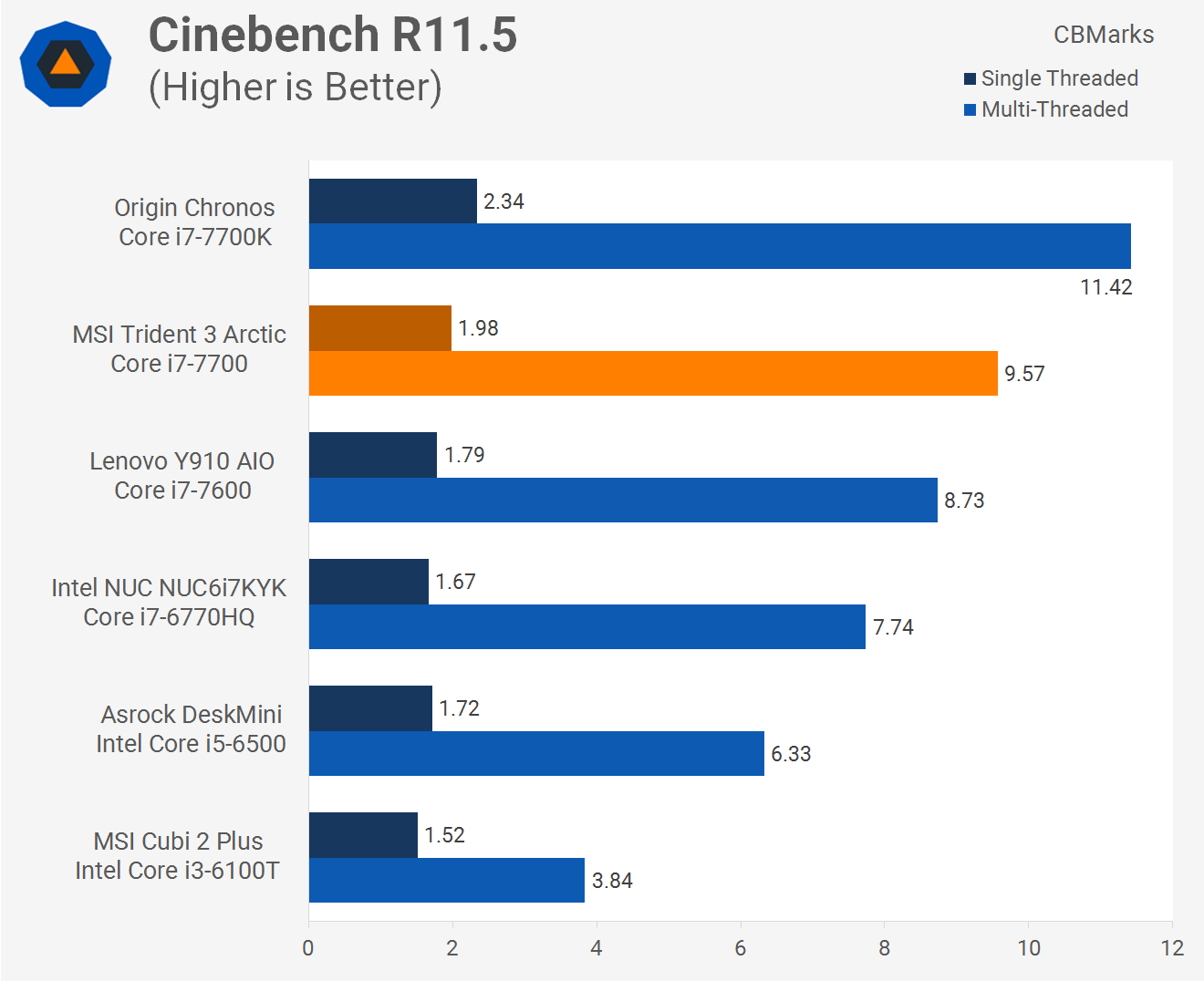
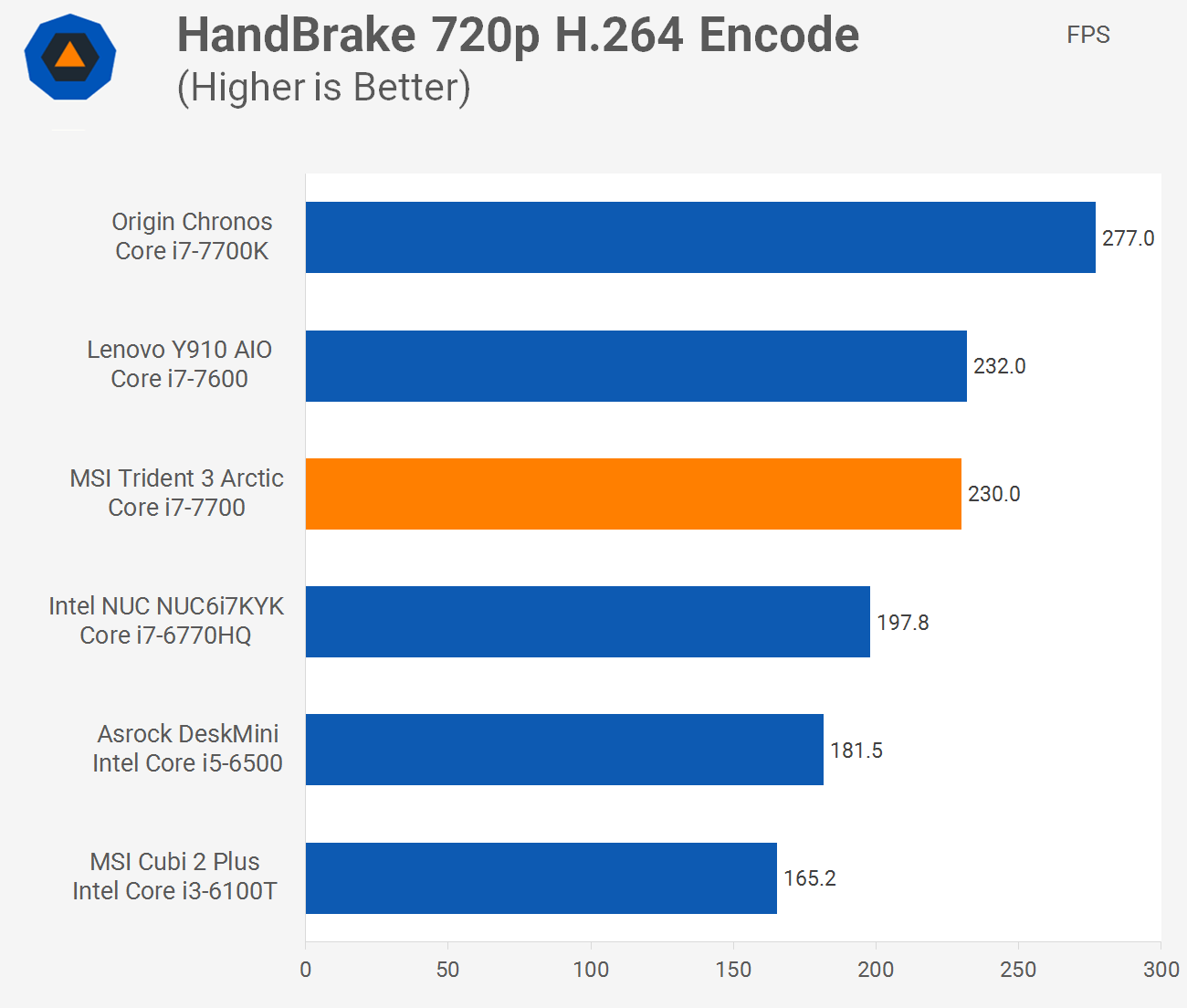
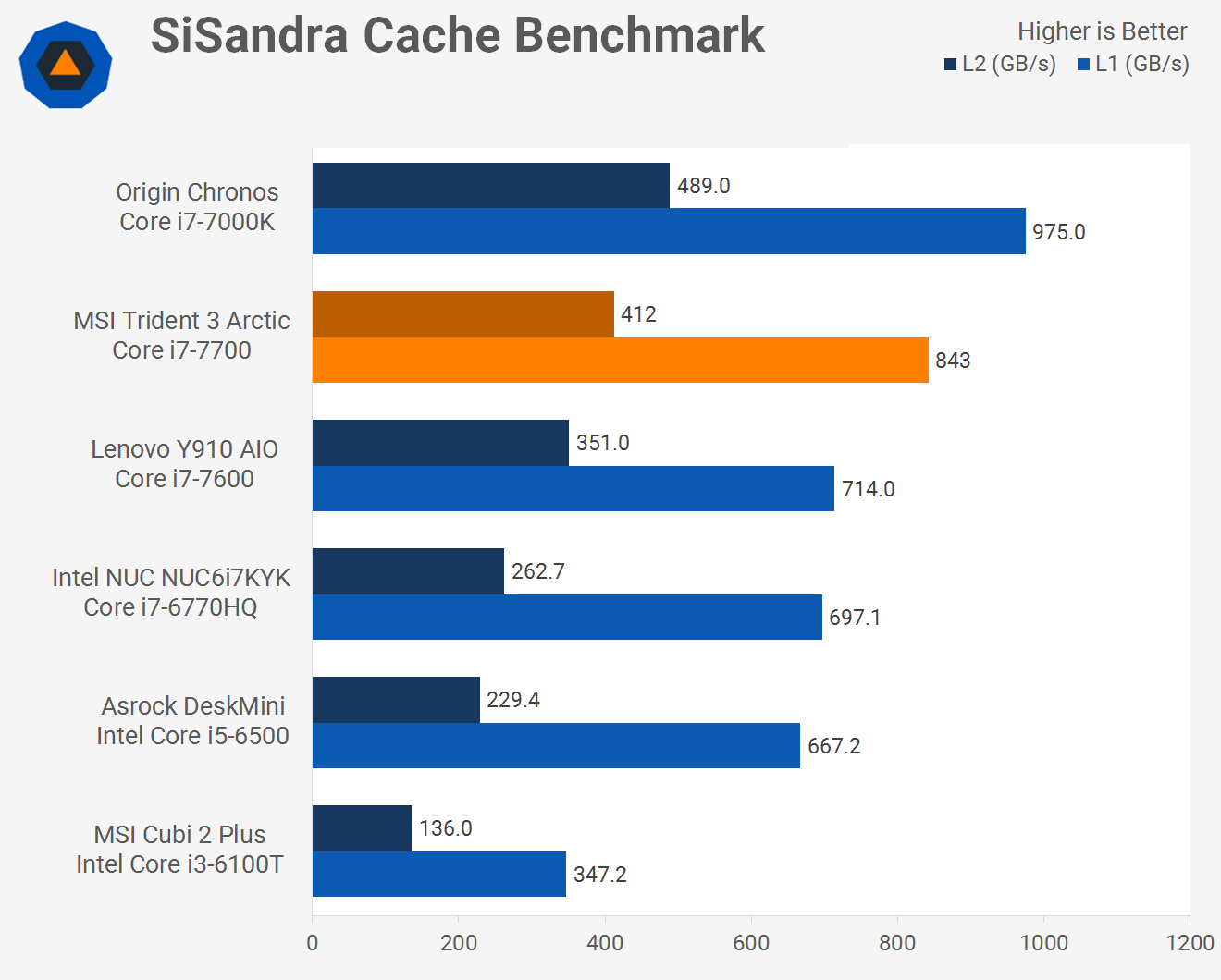
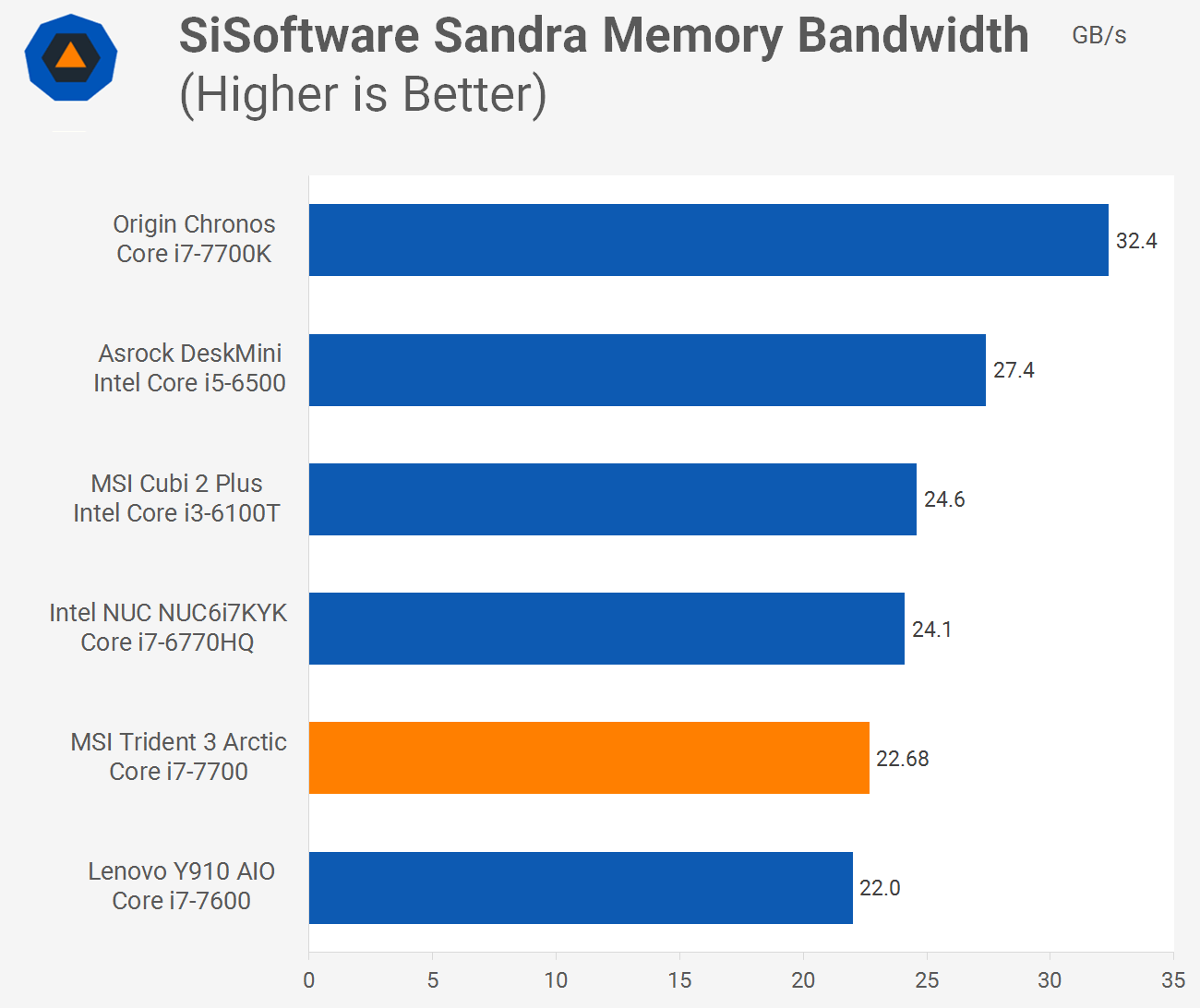
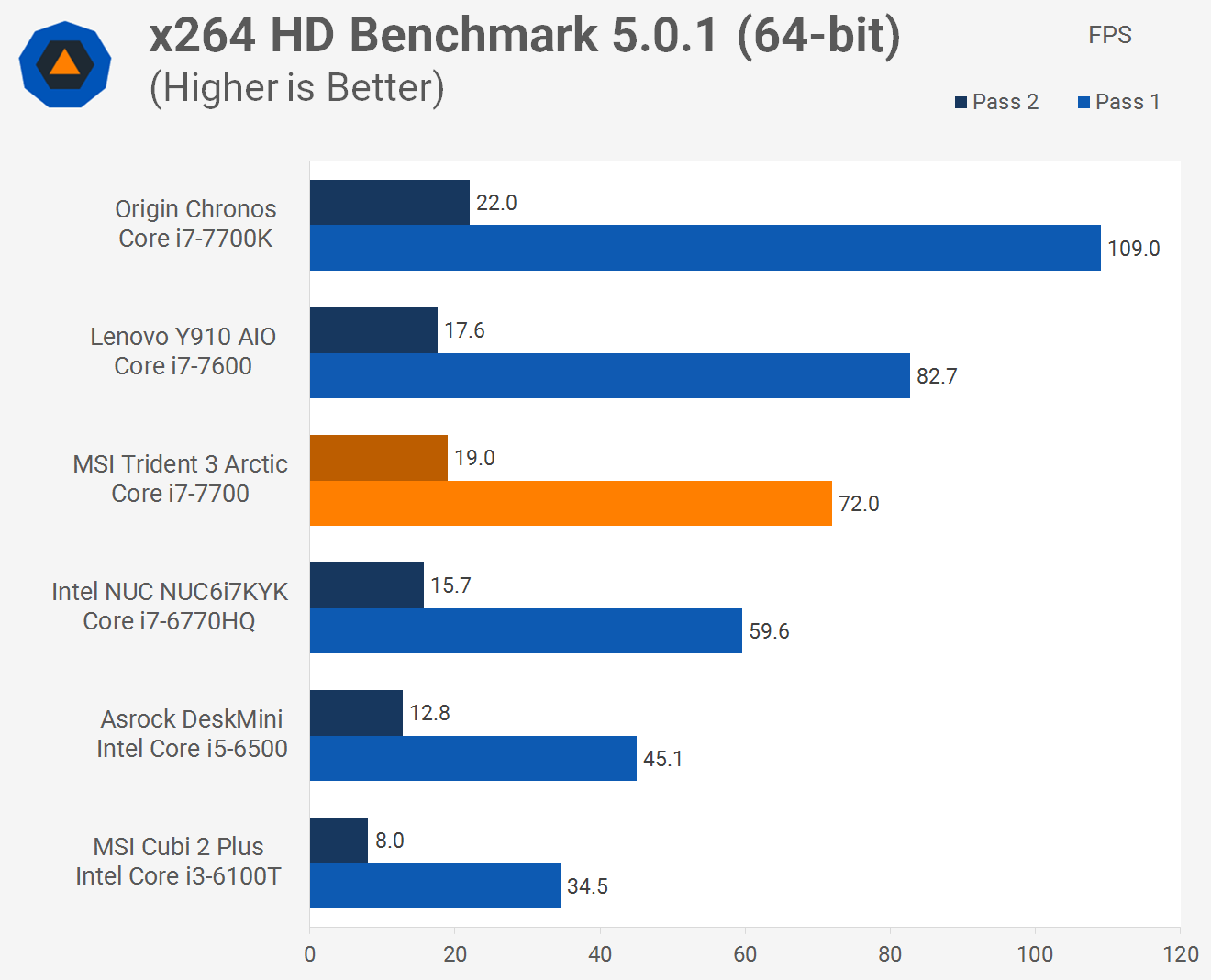
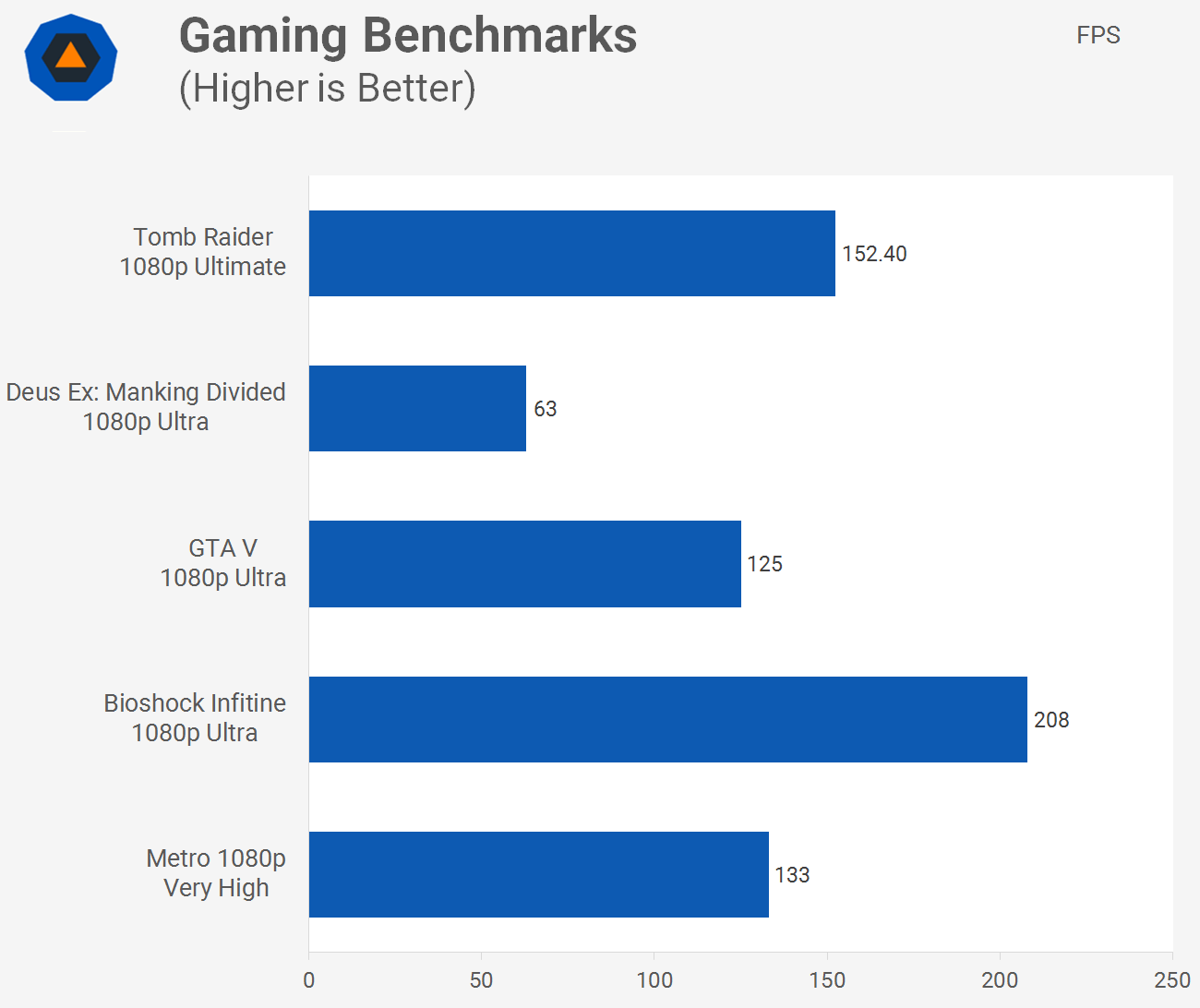
The MSI Trident 3 Arctic retails for $1,500 and you can spec it out for around $1,200-$1,300 individually. The couple hundred price premium gets you the compact and elegant case, a pre-assembled system with guaranteed compatibility, and MSI's support. We recently reviewed the Origin Chronos, a small form factor PC with a very similar layout. A similarly configured Chronos will cost $500 more, but is built with standard desktop components as opposed to proprietary MSI parts. It comes with much better cooling, but is also louder during normal use.
Shopping shortcuts:
At $1,500, the MSI Trident 3 Arctic isn't a bad deal. The only major issue I see with it is the CPU cooling. Other than that, it's quiet, fast, and looks great.
score
Pros: Sleek and compact look. Quiet under normal operation. Desktop-grade GTX 1070, good peripherals.
Cons: CPU cooler is noisy and thermally inadequate under load.


